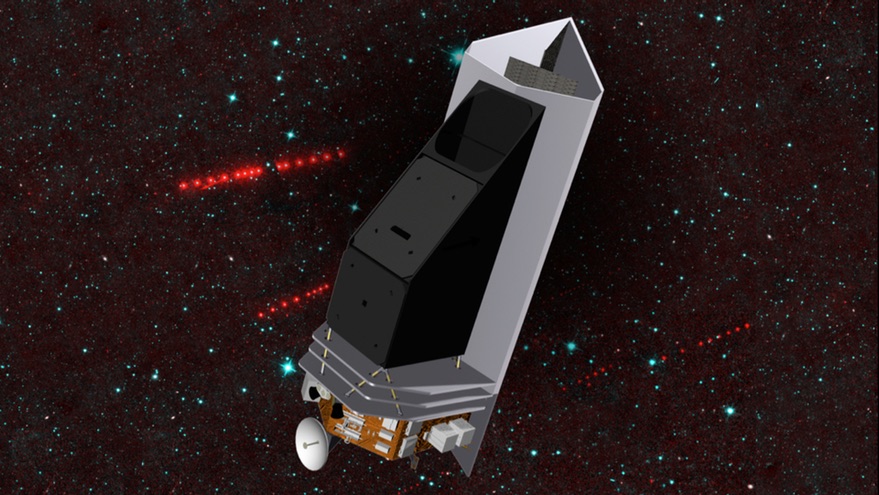WASHINGTON — House appropriators partially restored funding for a planetary defense mission as part of a spending bill while also raising concerns about NASA’s closure of an airborne observatory and plans to return samples from Mars.
The House Appropriations Committee released June 27 the report accompanying its commerce, justice and science (CJS) spending bill for fiscal year 2023, due to be marked up by the full committee June 28. The CJS appropriations subcommittee approved the bill without debate June 22.
The report spells out in greater detail how appropriators seek to allocate the $25.446 billion they provide to NASA, $1.4 billion more than what the agency received in 2022 but $527 million less than what NASA requested for fiscal year 2023 in March.
Appropriators partially rejected a proposal by NASA to cut funding for the Near Earth Object (NEO) Surveyor mission, a space telescope to search for potentially hazardous asteroids. NASA requested only $40 million for NEO Surveyor, pushing its 2026 launch back by at least two years. The project previously expected needing $170 million in 2023.
The report provides $94.9 million for NEO Surveyor and urges NASA to find a way to minimize the delay in the mission’s launch. “While NASA has rightly expressed concern about a lack of funding in prior years for near-Earth object surveillance, the Committee is concerned by the agency’s proposal to delay a high priority of the Planetary Science Decadal Survey until 2028,” the report stated, a reference to NEO Surveyor’s endorsement in the latest decadal survey, published in April. The report directs NASA, in its next budget proposal, “to provide a timeline for a NEO Surveyor launch prior to 2028.”
The committee criticized, but did not reject, NASA’s plans to terminate the Stratospheric Observatory for Infrared Astronomy (SOFIA), a Boeing 747 with an infrared telescope, at the end of the current fiscal year in September. While appropriators said they were concerned about NASA’s decision to terminate SOFIA without a formal senior review, they only directed NASA to provide a report “on NASA’s strategy to mitigate the science and data collection that will no longer be produced by SOFIA.” It also provides $30 million to close out the SOFIA project, $20 million more than what NASA requested.
Appropriators were also concerned about NASA’s Mars Sample Return campaign, in particular increasing costs of the effort to return samples being cached by the Perseverance rover. Specifically, it requests NASA to provide a report on using helicopters like the Ingenuity helicopter flown with Perseverance to support Mars Sample Return. Using multiple helicopters “could increase redundancy and ensure NASA has a capability to return samples by augmenting the Ingenuity helicopter design to add a sample retrieval capability,” the report states.
NASA officials have been quietly considering the use of helicopters, which have not been part of previous concepts for Mars Sample Return. At a meeting of NASA’s Planetary Science Advisory Committee June 21, Jeff Gramling, Mars Sample Return program director at NASA, said the success of Ingenuity prompted a review of whether it could be used for Mars Sample Return.
“We’ve looked at whether we could take the Ingenuity helicopter design and potentially modify it for us to fly, with the capability to carry samples,” he said. That is part of ongoing Phase A design studies expected to conclude before the end of the fiscal year.
In human spaceflight, appropriators largely followed the agency’s request. That includes $1.486 billion for the Human Landing System program for Artemis lunar landers and $224.3 million for Commercial Low Earth Orbit destinations, the project to support work on commercial space stations. The bill itself provided full funding, or even slightly more than requested, for the Space Launch System, Orion and Exploration Ground Systems programs.
Appropriators, though, did mention the cost and schedule overruns on Mobile Launcher 2, the mobile launch platform for the Block 1B version of SLS that was the subject of a sharply critical audit by NASA’s Office of Inspector General recently. The report restricts spending on Mobile Launcher 2 until 30 days after NASA submits a revised cost and schedule baseline for the project. Appropriators also urge NASA “to consider new methods of ensuring that cost and schedule estimates are met on this project, including the possible use of outside management advisory services.”
In space technology, the report urged NASA to take a larger role in orbital debris research. It directs NASA to spend up to $5 million for early-stage technology development “addressing tall pole technology gaps” for large orbital debris, such as grappling tumbling objects. It also calls on the agency to establish a competition through its Centennial Challenges prize program to find ways to detect, track and remove small space debris less than 10 centimeters across.
